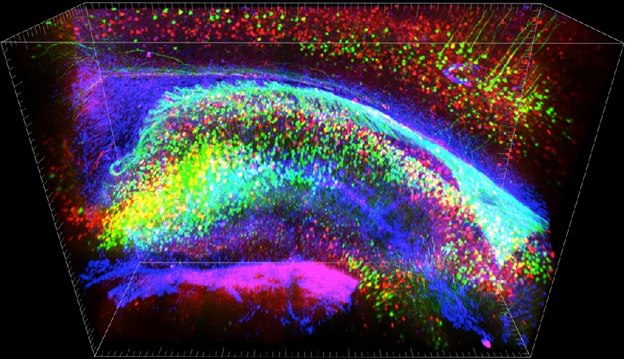How the diverse world of neurons is formed/deciphering the process of the emergence of neuronal diversity
Neurosafari The development of the cortex of the brain plays an important role in the development of different species, especially in humans. That is why scientists are studying its microscopic cellular structures, using methods of high diagnostic quality. Neuroscientists at the University of Geneva, or UNIGE for short, in Switzerland, investigated the diversity of cortical neurons (more precisely, interstitial or intermediate inhibitory neurons) during the period of growth and development close to birth. By deciphering the gene expression of cell type-specific genes, they discovered the emergence and formation of three subgroups of interneurons and also identified their precise and often unexpected location in the cortex.
According to Neurosafari, quoted by Science Newsline, the results of this study, published in the journal Nature Communications, open the door to a more detailed understanding of the specific complex mechanisms of cell types, which are the cause of neurodevelopmental disorders such as schizophrenia and autism. will do This category helps researchers to discover how genetic disorders related to psychiatric diseases affect the formation and emergence of neuronal subtypes and to design new interventions specifically for specific cell types.
The cortex of our brain contains two main categories of neurons: excitatory neurons with a frequency of about 80%, which produce the main cortical activity, and inhibitory (interstitial) neurons with a frequency of about 20%, which precisely regulate the aforementioned activity. they do Therefore, the cortical function of the brain depends on this neuronal diversity, which includes excitatory and inhibitory interneuron subtypes. The research team of Alexandre Dyer, Professor of the Department of Psychiatry and Basic Neurosciences at the Faculty of Medicine of the University of Geneva, studied inhibitory neurons in the fetal and postnatal phase. In adults, more than 20 subtypes of interstitial neurons have been identified. But when do these neurons appear? When are they different from others?
Emergence and differentiation of neurons
Alexander Dyer explains: “To discover the answers to these questions, we used transgenic mice so that certain types of interstitial inhibitory neurons were labeled by fluorescent molecules. These fluorescently labeled cells were studied in the early stages of development and growth, just before the birth of the mice and a few days after birth. Tagged neurons https://goo.gl/H48TpJ Join the Neurosafari brain and neuroscience telegram channel:
https://telegram.me/joinchat/CihxzDwTa19DOIUZRYLVjw
This post is written by neurosafari
